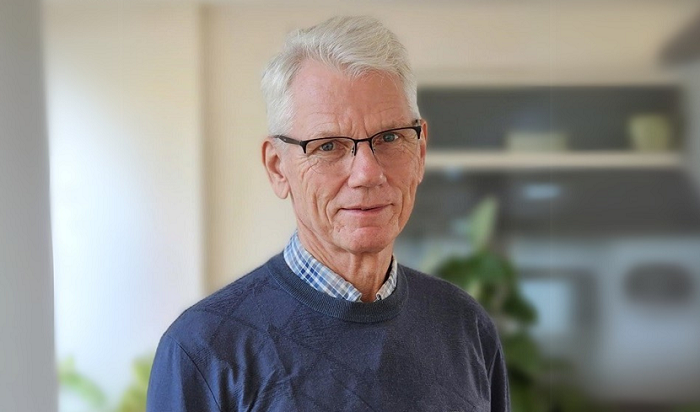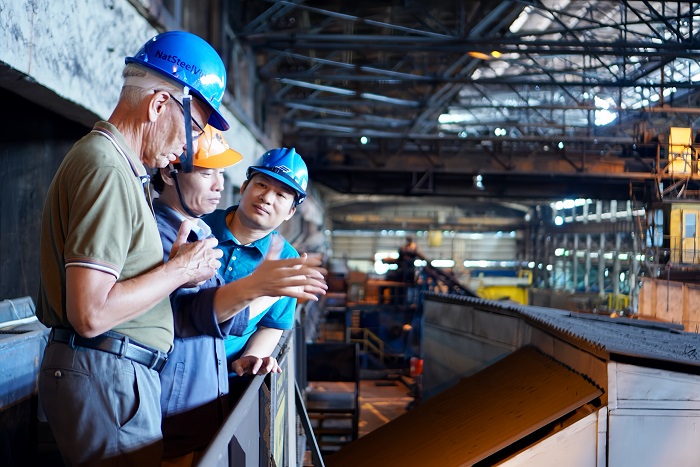Opportunities and Challenges
When discussing energy efficiency in Vietnam, Jorgen Hvid, a Danish expert with nearly 30 years of experience in the field who has come to Vietnam to work in several government-to-government energy programs since 2014, often refers to the concept of "low-hanging fruit."
This metaphor illustrates how Vietnamese companies have mostly implemented simple, low-cost solutions such as upgrading lighting systems, optimizing air conditioning, and installing inverters to enhance machine efficiency. However, more advanced solutions, such as upgrading production lines or adopting new technologies, remain largely untapped.
"Once the low-hanging fruits have been picked and businesses exhaust easy energy-saving options, they will have to consider more complex solutions. This is where they often struggle—not just due to a lack of capital, but more critically, a lack of technical expertise and strategic knowledge required to implement advanced energy efficiency projects," Jorgen explained.
Prioritization matters
Industry accounts for over 50% of Vietnam’s total energy consumption. While studies indicate that sectors like cement, steel, ceramics, construction, cold chain, and consumer goods could cut their energy use by 20-30%, many major businesses have yet to invest sufficiently in energy-efficient technologies—especially in sectors where energy costs represent a small portion of production expenses.
Heat recovery is a prime example. Many businesses waste enormous amounts of heat that could otherwise be recovered and repurposed. "Companies using boilers and gas furnaces operating above 300°C should consider capturing excess heat for other processes," Jorgen said. "Yet, this remains an overlooked area in Vietnam, and many proposals we receive focus on heat recovery in various forms."
Mr. Jorgen (left) and energy experts working with a steel enterprise in Thai Nguyen. Photo: DEPP3/VAS.
Energy audits have increased in Vietnam, providing businesses with detailed reports on energy consumption, high-energy-use areas, and recommended savings measures. These reports categorize energy-saving actions by investment level—ranging from low-cost measures to capital-intensive solutions—and include financial analyses such as payback periods and return on investment (ROI).
However, the number of energy audits conducted may not correspond to the actual energy-saving measures adopted by businesses. As a result, the expected effectiveness has not been fully realized, as most of these audits focus on simpler, more accessible solutions rather than those with significant impact and long-term sustainable benefits.
For most companies, the focus is on business expansion, product development, and new investments, rather than energy efficiency. Many lack technical teams capable of handling large-scale energy-saving projects.
"We need to shift the perspective on energy efficiency projects—viewing them as an investment in technology optimization, not only a standalone cost-saving measure," Jorgen noted. "Businesses invest in better products, higher quality, and reduced waste. Energy efficiency should be a natural part of that equation, not an isolated effort."
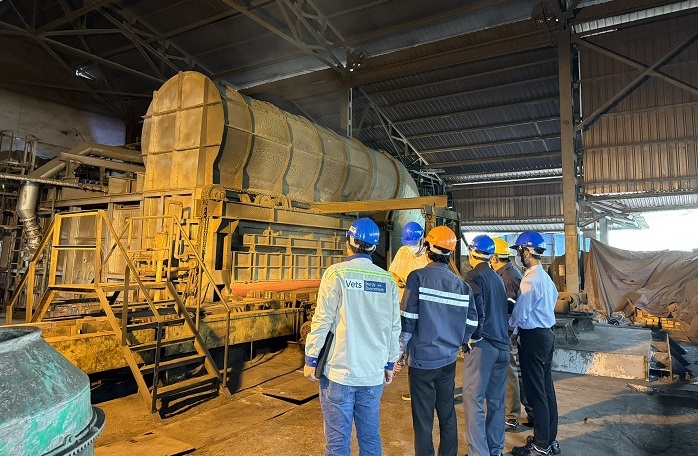
Energy experts working with a steel enterprise in Thai Nguyen. Photo: DEPP3/VAS.
Clearly, integrating energy efficiency into overall business development is what truly matters to enterprises. Companies do not want to treat it as a separate issue. When faced with any change—whether it’s an operational adjustment or a technological upgrade—businesses always ask: Does this align with our company’s priorities? How will we implement this change? Will it improve product quality or shorten production time?
If the only benefit is reducing energy costs but requires shutting down the production line for a week, the appeal quickly fades. On the other hand, if a new technology allows a company to expand into a promising market by demonstrating a low-carbon footprint for its products, the value gained far outweighs mere efficiency improvements.
For energy efficiency to become a top priority, it must deliver clear and practical economic benefits. If businesses see it as a strategic advantage—one that enhances competitiveness, unlocks new opportunities, and adds real value—they will be more likely to move it up on their agenda.
Drivers of Change
Kim Lan Ceramic Village (Gia Lam,Hanoi) is a testament to the transformation of small businesses. Eight years ago, more than 400 households were still using outdated coal-fired kilns, resulting in poor product quality and low productivity. Although they were aware of LPG gas kilns, they were hesitant to invest.
The turning point came with the Low Carbon Energy Efficiency (LCEE) project, implemented by the Ministry of Industry and Trade (MOIT) with Danish government support, which provided credit guarantees and expert guidance. In return, households had to strictly adhere to the technical guidelines, including energy monitoring, safety measures, insulation, and durability standards.
The results were striking, at least 50% reduction in energy consumption, 90% reduction in CO₂ emissions, firing time cut from 10 days to just 2. By the time the project ended, the share of households using LPG kilns had risen from 7% to 37% by 2015—and today, 95% have switched.
"We were surprised to see even small businesses, with no bank accounts or credit history, finding ways to finance LPG kilns. Their main priority was productivity, but environmental concerns also played a role—many realized that outdated coal kilns, located right in their villages, posed a direct health risk to their children. Hence, their drivers of change are not only business profit but also better environment for the whole village." Jorgen said.
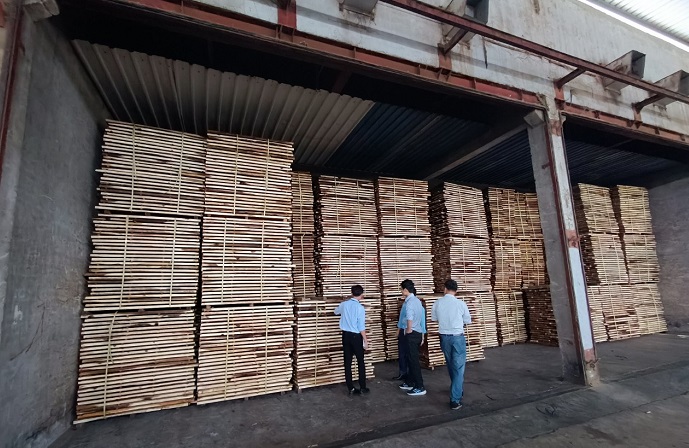
Energy experts working with an MDF wood panel processing enterprise in Nghe An. Photo: DEPP3/VAS.
For large enterprises, especially in industries such as steel and cement, business considerations take precedence. The most significant pressure, as well as the strongest driver, comes from international markets. Textile and seafood exporters are already feeling this pressure. They must race to reduce their carbon footprints; otherwise, they risk being shut out of demanding markets like European and the U.S.
Additionally, Vietnam’s government is tightening environmental regulations, making proactive compliance more attractive than waiting for enforcement.
"The most effective way to address this is through energy savings," Jorgen emphasized. "Sustainable energy solutions go beyond installing solar panels or switching to LED lighting—true impact comes from optimizing energy use at every stage of production."
Technical challenges & Policy solutions
For Vietnam’s 2,860 energy-intensive industrial facilities, the goal is to improve energy efficiency by 2% per year, reaching 8-10% by 2025-2030.
Early in his work in Vietnam, Jorgen’s team focused on developing financing mechanisms for energy efficiency projects. However, over time, he realized that the real barrier was not financing but a lack of technical expertise. Kim Lan pottery village is a typical example. And the deeper he works with Vietnamese enterprises aiming for high-hanging fruit, the more he realizes that the real issues does not lie in accessing funding but rather in the lack of expertise and knowledge on how to develop successful energy efficiency projects.
"Businesses struggle to adopt new technologies due to a shortage of specialists," Jorgen noted. "Banks hesitate to provide loans because projects lack technical and financial validation. That’s why, besides financing mechanisms, we also supported local authority in developing technical guidelines—because the real challenge is knowing where to start. Achieving significant savings requires a deep understanding of relevant technologies, sectors, and the specific enterprise itself. This is not only a challenge unique to Vietnam but elsewhere.”
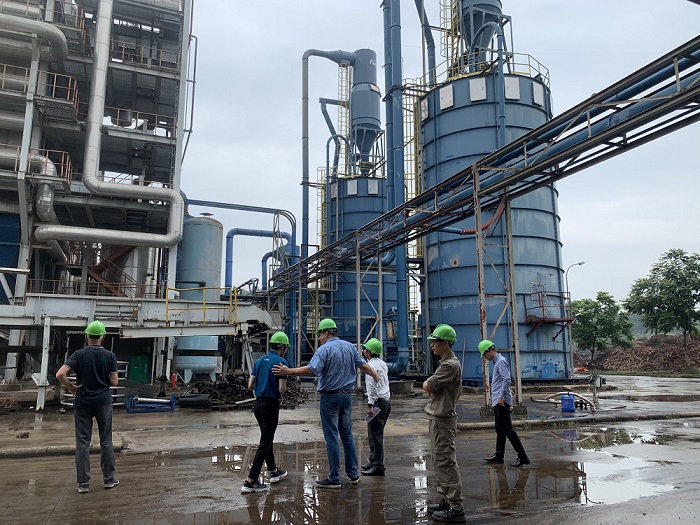
Energy experts working with an MDF wood panel processing enterprise in Nghe An. Photo: DEPP3/VAS.
To bridge this gap, Vietnam is now piloting a Voluntary Agreement Scheme (VAS), learning from a Danish successful model. This VAS has been implemented in Denmark for decades, significantly contributing to reduce the nation’s energy consumption and achieve economic development and sustainable climate goals. In general, it’s a collaboration between the government and businesses, where companies commit to specific energy savings targets in exchange for free technical support or incentives.
Launched by MOIT in 2023, VAS is currently being tested across multiple industries. Approximately 100 businesses expressed interest, with 15% selected for in-depth technical assistance. The pilot runs until 2025, but early reports suggest promising results.
VAS includes industry-specific energy audit guidelines for 10 key sectors, including fertilizers, beverages, ceramics, cement, paper, machinery, electronics, seafood, steel, and textiles.
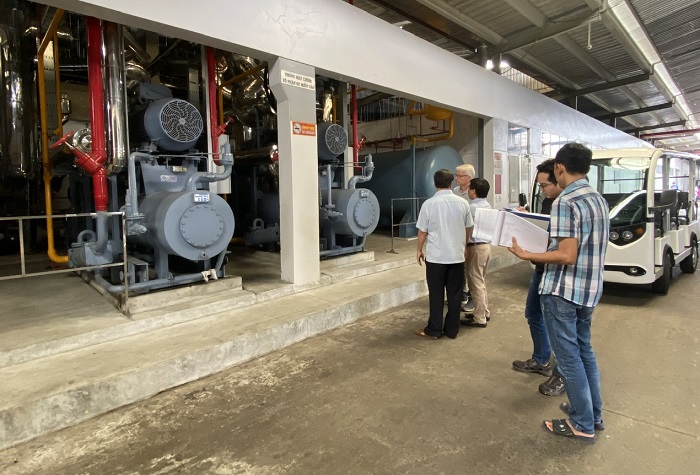
Energy experts working with a seafood processing enterprise in Can Tho. Photo: DEPP3/VAS.
"Each industry has unique challenges, so we developed a holistic approach," Jorgen explained. "We train energy auditors in new tools like energy mapping and core-to-service energy analysis (Onion diagram), helping them identify opportunities for improvement. We also encourage 'out-of-the-box' thinking—do companies really need 5 tons of coal per production unit? What alternatives exist?"
According to the Danish expert, Vietnam still faces a shortage of skilled energy auditors. Despite 2,000–3,000 technical graduates annually, many leave the field within a few years, and high-level expertise remains scarce. Additionally, labor demand depends on specific sectors and technologies. For example, industries utilizing boilers and widely adopted equipment require a large workforce that can be extensively trained. Meanwhile, sectors applying specialized technologies only need a limited number of highly skilled experts, with experience possibly ranging from 10-20 years.
"As technical capacity improves, feasibility studies will be more robust, enabling better project financing. But building expertise requires significant investment—it can’t be learned in a one-week training," Jorgen noted. "VAS, combined with high-quality technical support, is a powerful tool to transform industrial energy efficiency."
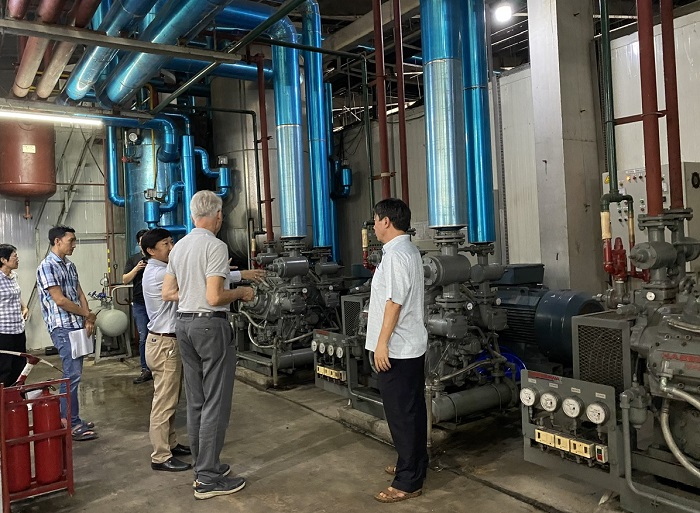
Energy experts working with a seafood processing enterprise in Can Tho. Photo: DEPP3/VAS.
A new policy landscape
Historically, Vietnam’s industrial energy efficiency policies have relied on regulations and compliance mandates. While effective to some extent, these approaches struggle with the diversity of industrial processes. Even within specific sectors, such as plastics manufacturing, adopting a uniform energy norm across the sector proves challenging. The primary obstacles are not only awareness or motivations among enterprises but rather absence of tools and technical support needed to identify and implement feasible energy-saving solutions. So far, regulations have yet to fully address these problems.
MOIT is now revising the Energy Efficiency Law, with significant amendment related to incorporate technical and financial support mechanisms, including proposals for an Energy Efficiency Fund and expanded Voluntary Agreements. The fund is expected to fundraise sufficient resources for not only providing technical assisstant but also capital for EE project implementation.
While still in draft form, initial feedback from key stakeholders has been largely positive. The revised law is expected to be presented to Vietnam’s National Assembly in May, and if approved, it will mark a potential milestone in both industrial energy policy and the broader economy.
Source: Science & Development Newspaper
